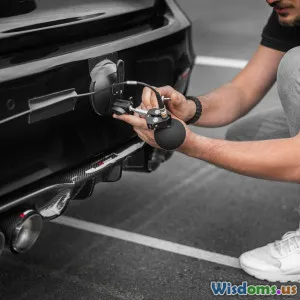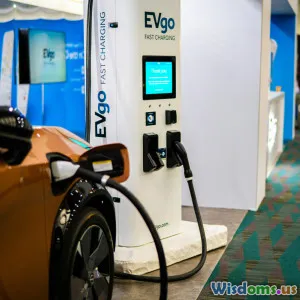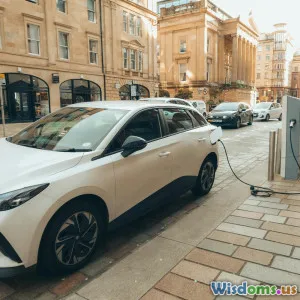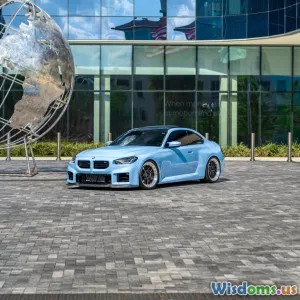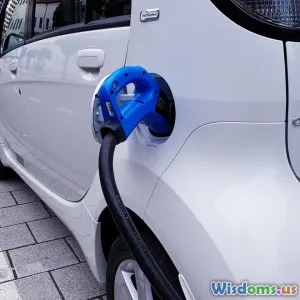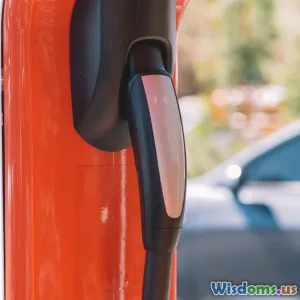
The Biggest Obstacles Car Makers Face in Going Green This Decade
8 min read Explore the major challenges automakers face in greening their fleets this decade and the path forward for a sustainable future. (0 Reviews)
The Biggest Obstacles Car Makers Face in Going Green This Decade
Introduction
The automotive industry stands at a decisive crossroads. Decades of reliance on fossil fuels have given way to an urgent push toward greener technologies. As governments tighten emission regulations and consumers demand cleaner options, car makers are compelled to innovate rapidly. Yet, transitioning to environmentally friendly vehicles is far from straightforward. This decade, automakers face some of the most significant hurdles in history — from complex supply chain constraints to technological challenges and hefty financial burdens.
Understanding these obstacles not only reveals why the shift to green transportation is a marathon, not a sprint, but also highlights where innovation, policy, and consumer behavior must align for lasting progress.
1. Battery Technology and Limited Resources
The Achilles' Heel of Electric Vehicles
Electric vehicles (EVs) represent the cornerstone of green mobility. However, their reliance on batteries reveals fundamental limitations. Lithium-ion batteries, currently the dominant technology, face issues such as limited energy density, prolonged charging times, and degradation over use.
Furthermore, the raw materials for these batteries—such as lithium, cobalt, and nickel—are scarce and often sourced from geopolitically sensitive regions. For instance, cobalt mining in the Democratic Republic of Congo has prompted ethical concerns, including labor rights issues. This scarcity inflates costs and threatens the scalability of EV production.
Emerging Alternatives and Current Limitations
Research into solid-state batteries and alternative chemistries like lithium-sulfur holds promise for greater energy density and faster charging. Companies like Toyota and QuantumScape are investing heavily here, but commercial viability remains years away.
Real-World Impact
Tesla’s aggressive Gigafactories highlight the scale of the challenge; the Nevada Gigafactory alone aims to consume more lithium than current global supplies, projecting intense future demand. Without breakthroughs, battery constraints risk bottlenecking the entire green vehicle market.
2. Supply Chain Vulnerabilities
Global Disruptions Highlight Fragility
The COVID-19 pandemic exposed the fragility of automotive supply chains, from semiconductor shortages to disrupted raw material shipments. Car manufacturers struggled to keep production lines running, delaying electric vehicle deliveries and dampening consumer enthusiasm.
Complexity of Battery Manufacturing Chains
Manufacturing batteries encompasses a wide geographical footprint, including mining, refining, component manufacturing, and assembly. A single disruption—such as trade restrictions or environmental issues—can ripple across the chain.
For example, Indonesia’s recent nickel export ban to encourage local battery manufacturing temporarily disrupted global supplies, illustrating how national policies deeply impact global efforts.
Toward Resilient and Ethical Supply Chains
Car makers and governments are increasingly exploring ‘battery ecosystems’—localized supply chains to minimize risks. Volkswagen, for instance, plans European battery production hubs designed for sustainability and supply security.
3. High Upfront Costs and Economic Viability
Hefty Investment Needs
Developing green technology requires colossal capital. Startups and traditional automakers alike spend billions on R&D, new production lines, and retraining staff. For example, General Motors has announced over $40 billion in electric and autonomous vehicle development spanning several years.
Consumer Price Sensitivity
Despite decreasing battery costs, electric vehicles often come with a higher sticker price compared to combustion-engine counterparts, limiting mass-market adoption. Governments counter this with subsidies and tax credits—for instance, the U.S. Electric Vehicle Tax Credit of up to $7,500 temporarily lowers cost barriers.
However, subsidies are subject to political winds; phase-outs risk stalling momentum if manufacturers and consumers cannot sustain costs independently.
4. Infrastructure Gaps
Charging Station Shortfalls
Range anxiety remains a potent barrier for consumers wary of EV adoption. Despite steady progress in charging networks, many regions lack sufficient fast-charging stations.
According to a 2023 report by the International Energy Agency, achieving global EV expansion targets demands increasing public chargers by over tenfold compared to current levels.
Grid Capacity and Renewable Integration
Rapid EV adoption burdens energy grids, demanding smarter load management and increased renewable energy integration to fulfill green promises. In some areas, outdated grids risk frequent outages without upgrades, blunting the benefit of transitioning to electrified transport.
5. Regulatory Complexity and Geopolitical Risks
Patchwork Policies
Globally, regulations on emissions and vehicle standards vary greatly, complicating multinational manufacturers’ strategies. While the EU pursues aggressive CO2 targets, other regions still lag on mandates or enforcement.
This regulatory dissonance makes it difficult to standardize production and scale greener fleets optimally.
Geopolitical Tensions
Heated trade relations, sanctions, and national interests disrupt supply lines and collaboration efforts crucial for green vehicle technologies.
For example, U.S.-China competition has heightened uncertainties around battery materials and technology partnerships, adding obstacles beyond technical or economic dimensions.
Conclusion
The journey toward greener vehicles is riddled with hurdles that span technological innovations, supply chain resilience, economic realities, infrastructure development, and complex regulatory landscapes. Car makers are navigating this multifaceted challenge alongside governments, suppliers, and consumers.
Encouragingly, there are signs of progress: breakthroughs in battery technology, strategic investments in localized supply chains, expanding charging infrastructure, and increasing global regulatory alignment. Yet, overcoming the decade’s obstacles demands a coordinated, multidisciplinary approach.
Consumers can also influence outcomes by adopting green vehicles and supporting sustainable policies, amplifying the shift beyond the factory floor.
As the clock ticks, this decade is crucial for shaping not just the automotive market, but the future of sustainable mobility that responds effectively to our climate crisis.
References:
- International Energy Agency, Global EV Outlook 2023
- Tesla Gigafactory Report, 2022
- General Motors EV Investment Announcement, 2023
- Reuters: Indonesia nickel API export ban updates
- U.S. Department of Energy, EV Tax Credits Overview
Rate the Post
User Reviews
Popular Posts










